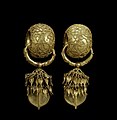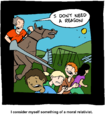Portal:The arts
- Alemannisch
- العربية
- Arpetan
- Azərbaycanca
- تۆرکجه
- Banjar
- 閩南語 / Bân-lâm-gú
- Беларуская (тарашкевіца)
- Bikol Central
- Български
- Boarisch
- Català
- Cebuano
- Čeština
- ChiShona
- الدارجة
- Deutsch
- Eesti
- Ελληνικά
- Español
- فارسی
- Français
- Galego
- Gĩkũyũ
- 한국어
- Հայերեն
- हिन्दी
- Bahasa Indonesia
- IsiZulu
- Italiano
- עברית
- Jawa
- Kapampangan
- ქართული
- Қазақша
- Kiswahili
- Kreyòl ayisyen
- Kurdî
- Latina
- Latviešu
- Lëtzebuergesch
- Lietuvių
- Magyar
- Македонски
- മലയാളം
- ဘာသာမန်
- Bahasa Melayu
- မြန်မာဘာသာ
- Nederlands
- 日本語
- Нохчийн
- Norsk bokmål
- Norsk nynorsk
- Occitan
- Олык марий
- Oʻzbekcha / ўзбекча
- پنجابی
- Picard
- Plattdüütsch
- Polski
- Português
- Română
- Runa Simi
- Русский
- සිංහල
- سنڌي
- Slovenčina
- کوردی
- Српски / srpski
- Svenska
- Taclḥit
- Татарча / tatarça
- Тоҷикӣ
- Türkçe
- Українська
- Tiếng Việt
- 文言
- West-Vlams
- 吴语
- Xitsonga
- 粵語
- Zazaki
- 中文
Portal maintenance status: (June 2024)
|
The arts
The arts or creative arts are a vast range of human practices of creative expression, storytelling, and cultural participation. The arts encompass diverse and plural modes of thinking, doing, and being in an extensive range of media. Both dynamic and a characteristically constant feature of human life have developed into stylized and intricate forms. This is achieved through sustained and deliberate study, training, or theorizing within a particular tradition, generations, and even between civilizations. The arts are a vehicle through which human beings cultivate distinct social, cultural, and individual identities while transmitting values, impressions, judgements, ideas, visions, spiritual meanings, patterns of life, and experiences across time and space. (Full article...)
Featured articles - load new batch
-
Image 1

The tomb of Philippe Pot is a funerary monument in the Louvre in Paris. It was commissioned by the military leader and diplomat Philippe Pot around the year 1480 to be used for his burial at the chapel of Saint-Jean-Baptiste in Cîteaux Abbey, Dijon, France. His effigy shows him recumbent on a slab, his hands raised in prayer, and wearing armour and a heraldic tunic. The eight mourners (pleurants) are dressed in black hoods and act as pallbearers carrying him towards his grave. Pot commissioned the tomb when he was around 52 years old, 13 years before he died in 1493. The detailed inscriptions on the slab's sides emphasise his achievements and social standing. (Full article...) -
Image 2Crown Fountain (sometimes known as the "Squirting Faces") is an interactive work of public art and video sculpture featured in Chicago's Millennium Park, which is located in the Loop community area. Designed by Spanish artist Jaume Plensa and executed by Krueck and Sexton Architects, it opened in July 2004. The fountain is composed of a black granite reflecting pool placed between a pair of glass brick towers. The towers are 50 feet (15.2 m) tall, and they use light-emitting diodes (LEDs) to display digital videos on their inward faces. Construction and design of the Crown Fountain cost $17 million. The water operates from May to October, intermittently cascading down the two towers and spouting through a nozzle on each tower's front face. (Full article...)
-
Image 3
Louis Lambert is an 1832 novel by French novelist and playwright Honoré de Balzac (1799–1850), included in the Études philosophiques section of his novel sequence La Comédie humaine. Set mostly in a school at Vendôme, it examines the life and theories of a boy genius fascinated by the Swedish philosopher Emanuel Swedenborg (1688–1772). (Full article...) -
Image 4The Final Cut is the twelfth studio album by the English rock band Pink Floyd, released on 21 March 1983 through Harvest and Columbia Records. It comprises unused material from the band's previous studio album, The Wall (1979), alongside new material recorded throughout 1982. (Full article...)
-
Image 5
The Low Memorial Library (nicknamed Low) is a building at the center of Columbia University's Morningside Heights campus in Upper Manhattan in New York City. The building, located near 116th Street between Broadway and Amsterdam Avenue, was designed by Charles Follen McKim of the firm McKim, Mead & White. The building was constructed between 1895 and 1897 as the university's central library, although it has contained the university's central administrative offices since 1934. Columbia University president Seth Low funded the building with $1 million (equivalent to $37 million in 2023) and named the edifice in memory of his father, Abiel Abbot Low. Low's facade and interior are New York City designated landmarks, and the building is also designated as a National Historic Landmark. (Full article...) -
Image 6
 Saint-Saëns c. 1880
Saint-Saëns c. 1880
Charles-Camille Saint-Saëns (UK: /ˈsæ̃sɒ̃(s)/, US: /sæ̃ˈsɒ̃(s)/; French: [ʃaʁl kamij sɛ̃sɑ̃(s)] ⓘ; 9 October 1835 – 16 December 1921) was a French composer, organist, conductor and pianist of the Romantic era. His best-known works include Introduction and Rondo Capriccioso (1863), the Second Piano Concerto (1868), the First Cello Concerto (1872), Danse macabre (1874), the opera Samson and Delilah (1877), the Third Violin Concerto (1880), the Third ("Organ") Symphony (1886) and The Carnival of the Animals (1886). (Full article...) -
Image 7Political Animals and Animal Politics is a 2014 edited collection published by Palgrave Macmillan and edited by the green political theorists Marcel Wissenburg and David Schlosberg. The work addresses the emergence of academic animal ethics informed by political philosophy as opposed to moral philosophy. It was the first edited collection to be published on the topic, and the first book-length attempt to explore the breadth and boundaries of the literature. As well as a substantial introduction by the editors, it features ten sole-authored chapters split over three parts, respectively concerning institutional change for animals, the relationship between animal ethics and ecologism, and real-world laws made for the benefit of animals. The book's contributors were Wissenburg, Schlosberg, Manuel Arias-Maldonado, Chad Flanders, Christie Smith, Clemens Driessen, Simon Otjes, Kurtis Boyer, Per-Anders Svärd, and Mihnea Tanasescu. The focus of their individual chapters varies, but recurring features include discussions of human exceptionalism, exploration of ways that animal issues are or could be present in political discourse, and reflections on the relationship between theory and practice in politics. (Full article...)
-
Image 8
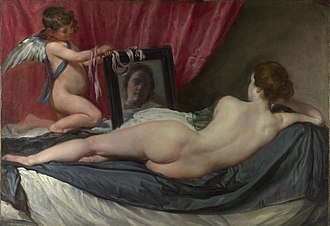
Rokeby Venus, c. 1647–1651. 122 cm × 177 cm (48 in × 70 in). National Gallery, London.
The Rokeby Venus (/ˈroʊkbi/ ROHK-bee; also known as The Toilet of Venus, Venus at her Mirror, Venus and Cupid and, in Spanish, La Venus del espejo) is a painting by Diego Velázquez, the leading artist of the Spanish Golden Age. Completed between 1647 and 1651, and probably painted during the artist's visit to Italy, the work depicts the goddess Venus in a sensual pose, lying on a bed with her back facing the viewer, and looking into a mirror held by the Roman god of physical love, her son Cupid. The painting is in the National Gallery, London. (Full article...) -
Image 9
The Man in the Moone is a book by the English divine and Church of England bishop Francis Godwin (1562–1633), describing a "voyage of utopian discovery". Long considered to be one of his early works, it is now generally thought to have been written in the late 1620s. It was first published posthumously in 1638 under the pseudonym of Domingo Gonsales. The work is notable for its role in what was called the "new astronomy", the branch of astronomy influenced especially by Nicolaus Copernicus. Although Copernicus is the only astronomer mentioned by name, the book also draws on the theories of Johannes Kepler and William Gilbert. Godwin's astronomical theories were greatly influenced by Galileo Galilei's Sidereus Nuncius (1610), but unlike Galileo, Godwin proposes that the dark spots on the Moon are seas, one of many parallels with Kepler's Somnium sive opus posthumum de astronomia lunari of 1634. (Full article...) -
Image 10

Walton in 1926
Sir William Turner Walton OM (29 March 1902 – 8 March 1983) was an English composer. During a sixty-year career, he wrote music in several classical genres and styles, from film scores to opera. His best-known works include Façade, the cantata Belshazzar's Feast, the Viola Concerto, the First Symphony, and the British coronation marches Crown Imperial and Orb and Sceptre. (Full article...) -
Image 11Laborintus II is an album by the Belgian orchestra Ictus Ensemble, the vocal group Nederlands Kamerkoor, and the American vocalist Mike Patton, which was recorded live at the 2010 Holland Festival. It was released on July 10, 2012, by Ipecac Recordings, and debuted at number 23 on the American Billboard Classical Albums Chart. It was not well received by critics. (Full article...)
-
Image 12The Way I See It is the third album by American R&B singer, songwriter, and producer Raphael Saadiq. It was released on September 16, 2008, by Columbia Records – his first for the label. Prior to signing with Columbia, Saadiq had independently released his 2004 album Ray Ray, recorded with the songwriting and production duo Jake and the Phatman. He developed a creative partnership with their colleague, audio engineer Charles Brungardt, who shared Saadiq's fascination with historic recording techniques and equipment. In 2008, the singer returned from a vacation that had inspired him to pursue classic soul music and recorded The Way I See It primarily at his North Hollywood studio with Brungardt. (Full article...)
-
Image 13
Jakob Ludwig Felix Mendelssohn Bartholdy (3 February 1809 – 4 November 1847), widely known as Felix Mendelssohn, was a German composer, pianist, organist and conductor of the early Romantic period. Mendelssohn's compositions include symphonies, concertos, piano music, organ music and chamber music. His best-known works include the overture and incidental music for A Midsummer Night's Dream (which includes his "Wedding March"), the Italian and Scottish Symphonies, the oratorios St. Paul and Elijah, the Hebrides Overture, the mature Violin Concerto, the String Octet, and the melody used in the Christmas carol "Hark! The Herald Angels Sing". Mendelssohn's Songs Without Words are his most famous solo piano compositions. (Full article...) -
Image 14A Wizard of Earthsea is a fantasy novel written by American author Ursula K. Le Guin and first published by the small press Parnassus in 1968. It is regarded as a classic of children's literature and of fantasy, within which it is widely influential. The story is set in the fictional archipelago of Earthsea and centers on a young mage named Ged, born in a village on the island of Gont. He displays great power while still a boy and joins a school of wizardry, where his prickly nature drives him into conflict with a fellow student. During a magical duel, Ged's spell goes awry and releases a shadow creature that attacks him. The novel follows Ged's journey as he seeks to be free of the creature. (Full article...)
-
Image 15Dating back to the early 12th century, the Alcázar of Segovia, Spain, is one of the most distinctive castles in Europe.
A castle is a type of fortified structure built during the Middle Ages predominantly by the nobility or royalty and by military orders. Scholars usually consider a castle to be the private fortified residence of a lord or noble. This is distinct from a mansion, palace, and villa, whose main purpose was exclusively for pleasance and are not primarily fortresses but may be fortified. Use of the term has varied over time and, sometimes, has also been applied to structures such as hill forts and 19th- and 20th-century homes built to resemble castles. Over the Middle Ages, when genuine castles were built, they took on a great many forms with many different features, although some, such as curtain walls, arrowslits, and portcullises, were commonplace. (Full article...)
Featured pictures
-
Image 1Robbins medallion of Apollo 7, by the Robbins Company (from Wikipedia:Featured pictures/Artwork/Others)
-
Image 2Sunrise, Inverness Copse, at and by Paul Nash (from Wikipedia:Featured pictures/Artwork/Others)
-
Image 3Computer generated still life, by Gilles Tran (re-rendered by Deadcode) (from Wikipedia:Featured pictures/Artwork/Others)
-
Image 5Joseph and Potiphar's Wife, by Rembrandt (edited by Crisco 1492) (from Wikipedia:Featured pictures/Artwork/Others)
-
Image 6Fliteline medallion of Gemini 12, by Fliteline (from Wikipedia:Featured pictures/Artwork/Others)
-
Image 7Magna Carta (An Embroidery), by Cornelia Parker (edited by Bammesk) (from Wikipedia:Featured pictures/Artwork/Others)
-
Image 8Isle of Graia Gulf of Akabah Arabia Petraea at Caravan (travellers), by David Roberts and Louis Haghe (edited by Durova) (from Wikipedia:Featured pictures/Artwork/Others)
-
Image 9Gin Lane at Gin Craze, by Samuel Davenport after William Hogarth (from Wikipedia:Featured pictures/Artwork/Others)
-
Image 11Robbins medallion of Apollo 14, by the Robbins Company (from Wikipedia:Featured pictures/Artwork/Others)
-
Image 12Mao Gong ding, by the National Palace Museum (edited by Crisco 1492) (from Wikipedia:Featured pictures/Artwork/Others)
-
Image 13Your Motherland Will Never Forget, at and by Joseph Simpson (restored by Adam Cuerden) (from Wikipedia:Featured pictures/Artwork/Others)
-
Image 14Monolith, the Face of Half Dome, by Ansel Adams (restored by Bammesk) (from Wikipedia:Featured pictures/Artwork/Others)
-
Image 16Gothic plate armour, by Anton Sorg (edited by Durova) (from Wikipedia:Featured pictures/Artwork/Others)
-
Image 17Nude study at Figurative art, by Kenyon Cox (edited by Durova) (from Wikipedia:Featured pictures/Artwork/Others)
-
Image 18Fliteline medallion of Gemini 11, by Fliteline (from Wikipedia:Featured pictures/Artwork/Others)
-
Image 19Autochrome nude study, by Arnold Genthe (edited by Chick Bowen) (from Wikipedia:Featured pictures/Artwork/Others)
-
Image 20Terragen scene at Scenery generator, by Fir0002 (from Wikipedia:Featured pictures/Artwork/Others)
-
Image 21Dali Atomicus at Salvador Dalí, by Philippe Halsman (edited by Trialsanderrors) (from Wikipedia:Featured pictures/Artwork/Others)
-
Image 25Crochet table-cloth, by Alvesgaspar/Júlia Figueiredo (from Wikipedia:Featured pictures/Artwork/Others)
-
Image 26The Lady with the Lamp at Florence Nightingale, by Henrietta Rae and Cassell & Co (from Wikipedia:Featured pictures/Artwork/Others)
-
Image 27"Wikipedian Protester" at xkcd, by Randall Munroe (from Wikipedia:Featured pictures/Artwork/Others)
-
Image 28Fliteline medallion of Gemini 10, by Fliteline (from Wikipedia:Featured pictures/Artwork/Others)
-
Image 29Robbins medallion of Apollo 8, by the Robbins Company (from Wikipedia:Featured pictures/Artwork/Others)
-
Image 30Pond in a Garden at Tomb of Nebamun, unknown author (edited by Yann) (from Wikipedia:Featured pictures/Artwork/Others)
-
Image 33Vanity Fair cover art, by Ethel McClellan Plummer (edited by Durova) (from Wikipedia:Featured pictures/Artwork/Others)
-
Image 34Robbins medallion of Apollo 10, by the Robbins Company (from Wikipedia:Featured pictures/Artwork/Others)
-
Image 37Stained-glass example of chromostereopsis, unknown author (from Wikipedia:Featured pictures/Artwork/Others)
-
Image 38The Onion Field, at and by George Davison (restored by Adam Cuerden) (from Wikipedia:Featured pictures/Artwork/Others)
-
Image 39Love or Duty at Chromolithography, by Gabriele Castagnola (restored by Adam Cuerden) (from Wikipedia:Featured pictures/Artwork/Others)
-
Image 40Cabiria poster, by N. Morgello (edited by Jujutacular) (from Wikipedia:Featured pictures/Artwork/Others)
-
Image 41Alchemist's Laboratory at Heinrich Khunrath, by Hans Vredeman de Vries (from Wikipedia:Featured pictures/Artwork/Others)
-
Image 42Robbins medallion of Apollo–Soyuz, by the Robbins Company (from Wikipedia:Featured pictures/Artwork/Others)
-
Image 43Doorway from Moutiers-Saint-Jean, by the Metropolitan Museum of Art (from Wikipedia:Featured pictures/Artwork/Others)
-
Image 44Fliteline medallion of Gemini 7, by Fliteline (from Wikipedia:Featured pictures/Artwork/Others)
-
Image 45Tilework on the Dome of the Rock, by Godot13 (from Wikipedia:Featured pictures/Artwork/Others)
-
Image 46Coca-Cola advertising poster, unknown author (edited by Victorrocha) (from Wikipedia:Featured pictures/Artwork/Others)
-
Image 48The battle of Mazandaran at Mazandaran province, unknown author (from Wikipedia:Featured pictures/Artwork/Others)
-
Image 50The Tiburtine Sibyl and the Emperor Augustus, by Antonio da Trento (restored by Adam Cuerden) (from Wikipedia:Featured pictures/Artwork/Others)
-
Image 52Stucco relief drawing at Maya civilization, by Ricardo Almendáriz (edited by Durova) (from Wikipedia:Featured pictures/Artwork/Others)
-
Image 53Robbins medallion of Apollo 17, by the Robbins Company (from Wikipedia:Featured pictures/Artwork/Others)
-
Image 54The Adoration of the Shepherds at History of Christianity in Ukraine, unknown author (from Wikipedia:Featured pictures/Artwork/Others)
-
Image 55Poster for the United States National Park Service at Federal Art Project, by Frank S. Nicholson (edited by Durova) (from Wikipedia:Featured pictures/Artwork/Others)
-
Image 57Robbins medallion of Apollo 15, by the Robbins Company (from Wikipedia:Featured pictures/Artwork/Others)
-
Image 58Pepper No. 30, by Edward Weston (edited by Bammesk) (from Wikipedia:Featured pictures/Artwork/Others)
-
Image 59Fliteline medallion of Gemini 4, by Fliteline (from Wikipedia:Featured pictures/Artwork/Others)
-
Image 60Taos Pueblo, by Ansel Adams (edited by Kaldari) (from Wikipedia:Featured pictures/Artwork/Others)
-
Image 61Robbins medallion of Apollo 12, by the Robbins Company (from Wikipedia:Featured pictures/Artwork/Others)
-
Image 62The Custer Fight at Lithography, by Charles Marion Russell (restored by Adam Cuerden) (from Wikipedia:Featured pictures/Artwork/Others)
-
Image 63The Pirate Publisher—An International Burlesque that has the Longest Run on Record at The Pirates of Penzance, by Joseph Keppler (restored by Adam Cuerden) (from Wikipedia:Featured pictures/Artwork/Others)
-
Image 64Celadon kettle, by the National Museum of Korea (edited by Crisco 1492) (from Wikipedia:Featured pictures/Artwork/Others)
-
Image 65Idi Amin caricature, by Edmund S. Valtman (edited by Durova) (from Wikipedia:Featured pictures/Artwork/Others)
-
Image 66Christmas angel at Gloria in excelsis Deo, by J. R. Clayton and The Brothers Dalziel (from Wikipedia:Featured pictures/Artwork/Others)
-
Image 671910 cover of Life, by Coles Phillips (edited by Durova) (from Wikipedia:Featured pictures/Artwork/Others)
-
Image 68Costume designed by David for legislators, at and by Jacques-Louis David and Vivant Denon (edited by Mvuijlst) (from Wikipedia:Featured pictures/Artwork/Others)
-
Image 69Grant of Arms at Spanish heraldry, unknown author (edited by Durova) (from Wikipedia:Featured pictures/Artwork/Others)
-
Image 71A Brush for the Lead at Sleigh Ride, by Thomas Worth (edited by Durova) (from Wikipedia:Featured pictures/Artwork/Others)
-
Image 72The Miraculous Sacrement at Jean-Baptiste Capronnier, by Alvesgaspar (from Wikipedia:Featured pictures/Artwork/Others)
-
Image 74"When We All Believe", at and by Rose O'Neill (from Wikipedia:Featured pictures/Artwork/Others)
-
Image 75Robbins medallion of Apollo 9, by the Robbins Company (from Wikipedia:Featured pictures/Artwork/Others)
-
Image 76Fliteline medallion of Gemini 5, by Fliteline (from Wikipedia:Featured pictures/Artwork/Others)
-
Image 77Fantascope at Phenakistiscope, by Thomas Mann Baynes (animated by Basile Morin) (from Wikipedia:Featured pictures/Artwork/Others)
-
Image 78Robbins medallion of Apollo 11, by the Robbins Company (from Wikipedia:Featured pictures/Artwork/Others)
-
Image 79Ijazah, by 'Ali Ra'if Efendi (edited by Durova) (from Wikipedia:Featured pictures/Artwork/Others)
-
Image 82Caricature of Wang Lianying, at and by Jefferson Machamer (restored by Crisco 1492) (from Wikipedia:Featured pictures/Artwork/Others)
-
Image 86Pixel art, by ReffPixels (vectorized by OmegaFallon) (from Wikipedia:Featured pictures/Artwork/Others)
-
Image 89 Nautilus, by Edward Weston (restored by Yann) (from Wikipedia:Featured pictures/Artwork/Others)
-
Image 90Ayyavazhi emblem at Ayya Vaikundar, by Vaikunda Raja (from Wikipedia:Featured pictures/Artwork/Others)
-
Image 91Paper cutout featuring the Lord's Prayer, at and by Martha Ann Honeywell (from Wikipedia:Featured pictures/Artwork/Others)
-
Image 93Mirror writing, by Mahmoud Ibrahim (edited by Durova) (from Wikipedia:Featured pictures/Artwork/Others)
-
Image 95Fliteline medallion of Gemini 8, by Fliteline (from Wikipedia:Featured pictures/Artwork/Others)
-
Image 98The King of Brobdingnag and Gulliver at Gulliver's Travels, by James Gillray (restored by Crisco 1492) (from Wikipedia:Featured pictures/Artwork/Others)
-
Image 99Crown of the Andes, by the Metropolitan Museum of Art (from Wikipedia:Featured pictures/Artwork/Others)
-
Image 100Rosette Bearing the Names and Titles of Shah Jahan, unknown author (from Wikipedia:Featured pictures/Artwork/Others)
-
Image 102First page of Codex Mendoza, unknown author (from Wikipedia:Featured pictures/Artwork/Others)
-
Image 103Fliteline medallion of Gemini 9A, by Fliteline (from Wikipedia:Featured pictures/Artwork/Others)
-
Image 104Beer Street at Beer Street and Gin Lane, by Samuel Davenport after William Hogarth (from Wikipedia:Featured pictures/Artwork/Others)
-
Image 105Robbins medallion of Apollo 16, by the Robbins Company (from Wikipedia:Featured pictures/Artwork/Others)
-
Image 106Robbins medallion of Apollo 13, by the Robbins Company (from Wikipedia:Featured pictures/Artwork/Others)
-
Image 107Weeki Wachee spring, Florida at Weeki Wachee Springs, by Toni Frissell (restored by Trialsanderrors) (from Wikipedia:Featured pictures/Artwork/Others)
-
Image 108Segment of the Surrogate's Courthouse mosaic, by Rhododendrites (from Wikipedia:Featured pictures/Artwork/Others)
-
Image 109H.M.S. Pinafore poster, by Vic Arnold (edited by Adam Cuerden) (from Wikipedia:Featured pictures/Artwork/Others)
-
Image 110Madonna and child at Chiaroscuro], by Bartolomeo Coriolano (edited by Durova) (from Wikipedia:Featured pictures/Artwork/Others)
-
Image 111The Pig Faced Lady of Manchester Square and the Spanish Mule of Madrid, at Pig-faced women, by George Cruikshank (from Wikipedia:Featured pictures/Artwork/Others)
-
Image 112Golden earrings from Gyeongju, by the National Museum of Korea (from Wikipedia:Featured pictures/Artwork/Others)
-
Image 113The Thin Red Line at Remembrance poppy, by Harold H. Piffard (restored by Adam Cuerden) (from Wikipedia:Featured pictures/Artwork/Others)
-
Image 114Ornamental latin alphabet at Initial, by F. Delamotte (restored and vectorized by JovanCormac) (from Wikipedia:Featured pictures/Artwork/Others)
-
Image 115Saturday Morning Breakfast Cereal panel, by Zach Weinersmith (from Wikipedia:Featured pictures/Artwork/Others)
-
Image 116Fliteline medallion of Gemini 3, by Fliteline (from Wikipedia:Featured pictures/Artwork/Others)
-
Image 117Zaandam at Etching revival, by James Abbott McNeill Whistler (edited by Durova) (from Wikipedia:Featured pictures/Artwork/Others)
-
Image 118scene from the Little Lord Fauntleroy, by Elco. Corp. (edited by Durova) (from Wikipedia:Featured pictures/Artwork/Others)
-
Image 119Fliteline medallion of Gemini 6A, by Fliteline (from Wikipedia:Featured pictures/Artwork/Others)
Vital articles

A design is the concept of or proposal for an object, process, or system. The word design refers to something that is or has been intentionally created by a thinking agent, and is sometimes used to refer to the inherent nature of something – its design. The verb to design expresses the process of developing a design. In some cases, the direct construction of an object without an explicit prior plan may also be considered to be a design (such as in arts and crafts). A design is expected to have a purpose within a certain context, usually having to satisfy certain goals and constraints and to take into account aesthetic, functional, economic, environmental, or socio-political considerations. Traditional examples of designs include architectural and engineering drawings, circuit diagrams, sewing patterns, and less tangible artefacts such as business process models. (Full article...)
Categories
Get involved
- Check the recent changes page for improvements, other changes, and vandalism to these articles
- Article requests: Requests articles (arts and entertainment)
- Deletion discussions: Listed at Wikipedia:WikiProject Deletion sorting/Arts
- Expand: check Visual arts stubs to expand
- Notability: Articles with notability concerns, listed at WikiProject Notability
- Requested pictures: Arts topics, requested pictures
Related portals
- Pages using the Phonos extension
- Pages with French IPA
- Pages including recorded pronunciations
- Wikipedia move-protected portals
- Wikipedia semi-protected portals
- Portals with triaged subpages from June 2024
- All portals with triaged subpages
- Portals with no named maintainer
- Automated article-slideshow portals with over 1000 articles in article list
- Redirect targets of redirected portals with existing subpages
- Unredirected portals with existing subpages



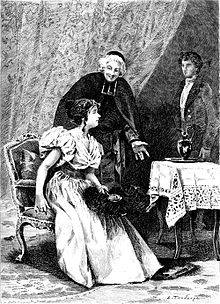
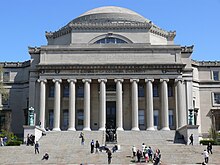


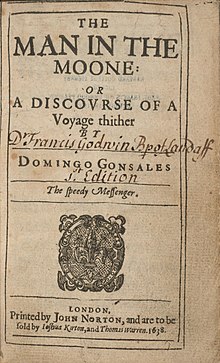





























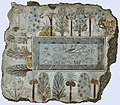










































































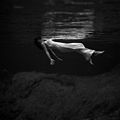


![Image 110Madonna and child at Chiaroscuro], by Bartolomeo Coriolano (edited by Durova) (from Wikipedia:Featured pictures/Artwork/Others)](http://upload.wikimedia.org/wikipedia/commons/thumb/4/49/Mary_Coriolano2.jpg/91px-Mary_Coriolano2.jpg)

